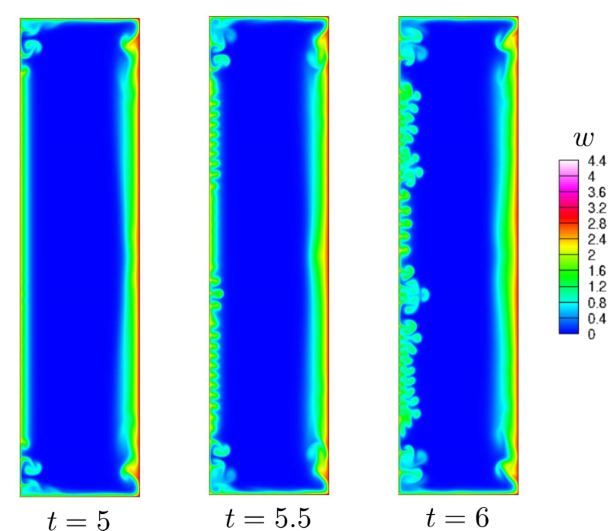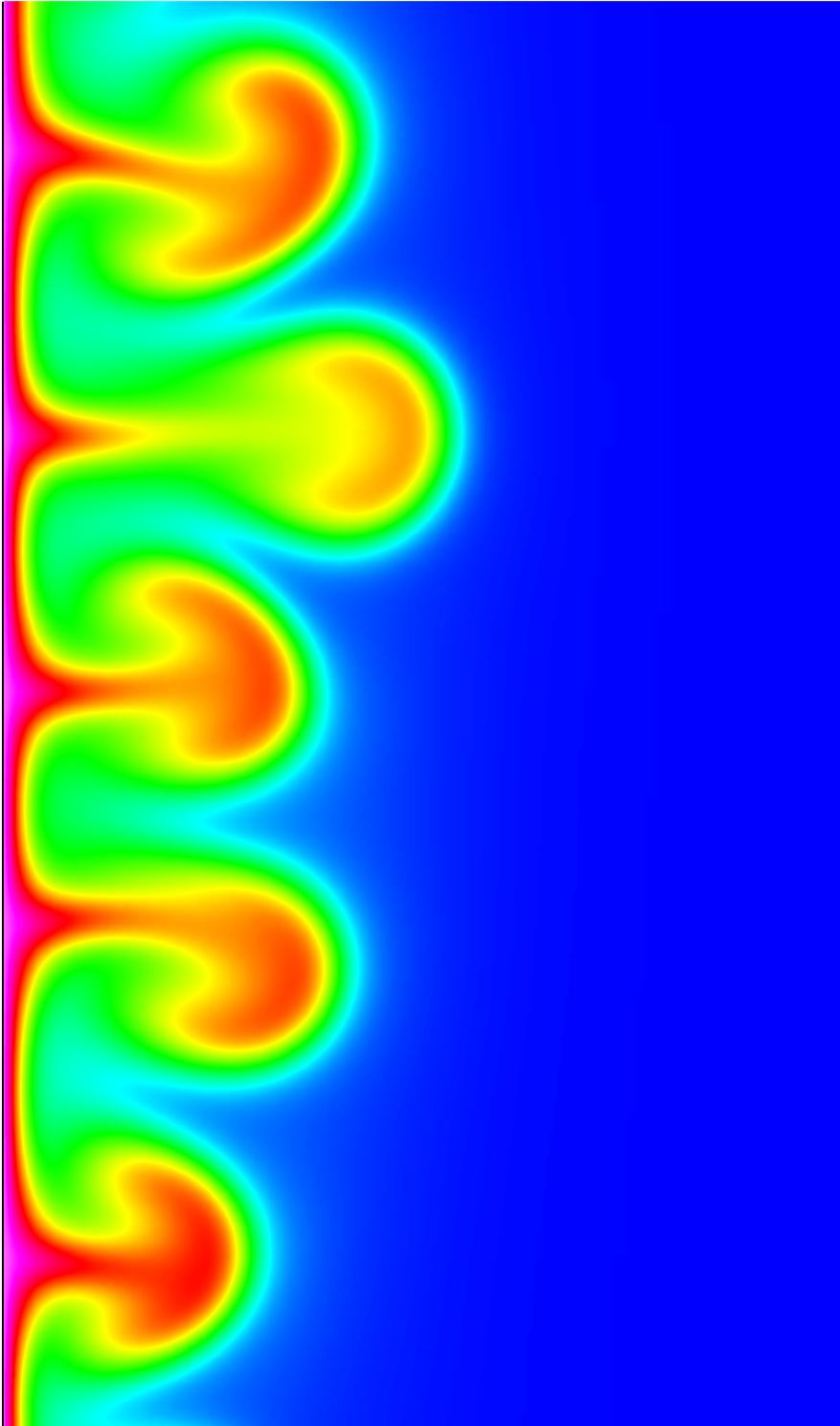
The complex unsteady flow within a fluid-filled annulus and its transition to turbulence
Sophie Calabretto, Department of Engineering Science
The spin-up from rest of a fluid enclosed by a container can yield some interesting and beautiful phenomena.
Initially, the container and the fluid are both stationary. A sufficiently long time after the container is set spinning, the fluid rotates with the container as if it were a solid body.
Between these two simple, well-understood, equilibrium states a complicated process occurs involving the transient formation of boundary layers (thin layers of moving fluid) and turbulence (an unsteady, disorganised, three-dimensional state of flow).
The aim of this project is to investigate the unsteady dynamics resulting from these rotating flows. The transition between slightly disturbed laminar flow and fully turbulent flow is of particular interest. Turbulent transient flows appear in a broad range of fields, including the study and optimisation of pipe networks, and the analysis of abnormalities in the cardiovascular system.

Figure 1 (left): Snapshots of the azimuthal velocity component (velocity in the direction of rotation), showing the development of an unsteady boundary layer and secondary phenomena.

Figure 2 (right): Close-up of the secondary non-linear Görtler instabilities seen on the inner wall of an
annulus with a rectangular aspect ratio.
The flow of fluid in a rotating annulus is used as a paradigm for studying the complex dynamics of these transient flows. As with all real fluid motion, the flow in this problem is governed by the full, three-dimensional, Navier-Stokes equations. Analytic solutions are known only for a small number of particular cases, and so computational schemes are used to calculate approximations to the pressure and velocity fields. In this project, the rotationally symmetric Navier-Stokes equations are numerically solved by exploiting the capabilities of semtex (http://users.monash.edu.au/~bbun/semtex.html) a quadrilateral spectral element direct numerical simulation (DNS) code that is ideal for solving problems in cylindrical coordinate systems.
Solving the rotationally symmetric Navier-Stokes equations
Semtex is a family of spectral element simulation codes, written in C++,developed by Prof. Hugh Blackburn of Monash University, Australia. Semtex uses parametrically mapped quadrilateral elements, the classic Gauss-Lobatto-Legendre nodal shape function basis, and continuous Galerkin projection to solve the conservation of momentum (Navier-Stokes) equations and the conservation of mass (continuity) equation that govern the flow of an incompressible fluid. In order to obtain a solution that is converged both spatially and temporally, a very fine computational mesh and a small time step are used when unning the DNS code. Using multiple threads on a single node, may require 20 GB of RAM and CPU times of up to a week, while producing datasets of up to 80 GB.
The next step will be to use the Pan cluster to run fully three-dimensional simulations of the flow (rather than looking at the rotationally symmetric cross-section). Pan will be crucial for this task, as the code will be run in parallel (using MPI to distribute jobs over a number of processors). Distributing this huge problem over many nodes makes the simulation feasible – drastically reducing the computation time required, while still allowing highly-resolved, converged solutions. Without access to the NeSI Pan cluster, these three-dimensional simulations would not be practicable.
See more case study projects

Our Voices: using innovative techniques to collect, analyse and amplify the lived experiences of young people in Aotearoa

Painting the brain: multiplexed tissue labelling of human brain tissue to facilitate discoveries in neuroanatomy

Detecting anomalous matches in professional sports: a novel approach using advanced anomaly detection techniques

Benefits of linking routine medical records to the GUiNZ longitudinal birth cohort: Childhood injury predictors

Using a virtual machine-based machine learning algorithm to obtain comprehensive behavioural information in an in vivo Alzheimer’s disease model

Mapping livability: the “15-minute city” concept for car-dependent districts in Auckland, New Zealand

Travelling Heads – Measuring Reproducibility and Repeatability of Magnetic Resonance Imaging in Dementia

Novel Subject-Specific Method of Visualising Group Differences from Multiple DTI Metrics without Averaging

Re-assess urban spaces under COVID-19 impact: sensing Auckland social ‘hotspots’ with mobile location data

Aotearoa New Zealand’s changing coastline – Resilience to Nature’s Challenges (National Science Challenge)

Proteins under a computational microscope: designing in-silico strategies to understand and develop molecular functionalities in Life Sciences and Engineering

Coastal image classification and nalysis based on convolutional neural betworks and pattern recognition

Determinants of translation efficiency in the evolutionarily-divergent protist Trichomonas vaginalis

Measuring impact of entrepreneurship activities on students’ mindset, capabilities and entrepreneurial intentions

Using Zebra Finch data and deep learning classification to identify individual bird calls from audio recordings

Automated measurement of intracranial cerebrospinal fluid volume and outcome after endovascular thrombectomy for ischemic stroke

Using simple models to explore complex dynamics: A case study of macomona liliana (wedge-shell) and nutrient variations

Fully coupled thermo-hydro-mechanical modelling of permeability enhancement by the finite element method

Modelling dual reflux pressure swing adsorption (DR-PSA) units for gas separation in natural gas processing

Molecular phylogenetics uses genetic data to reconstruct the evolutionary history of individuals, populations or species

Wandering around the molecular landscape: embracing virtual reality as a research showcasing outreach and teaching tool
























































































































































